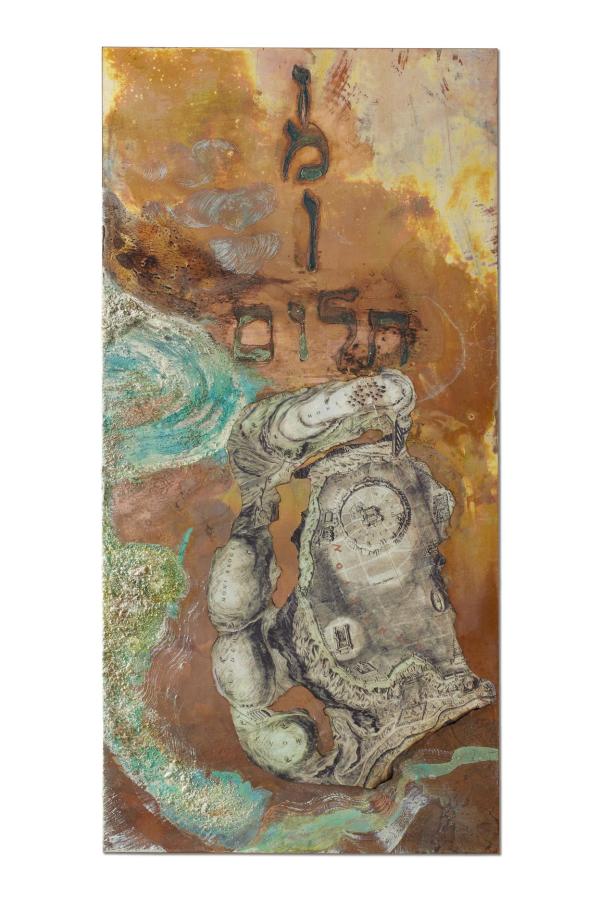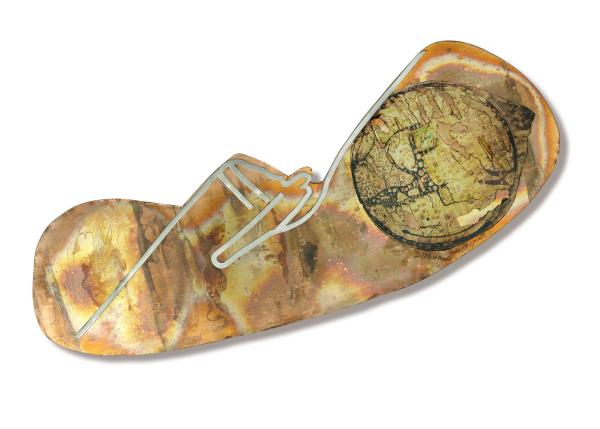Collection of The SIP Shpilman Institute for Photography, Israel
The title "And hopes that set them sailing in other directions" was extracted from Yehuda Amichai's poem "Jerusalem, Jerusalem, Why Jerusalem?": "And there are days here when everything is sails and more sails, / even though there's no sea in Jerusalem, not even a river. / Everything is sails: the flags, the prayer shawls, the black coats, / the monks' robes, the kaftans and kaffiyehs, / young women's dresses and headdresses, / Torah mantles and prayer rugs, feelings that swell in the wind / and hopes that set them sailing in other directions. / […] / are sails, all of them sails in the splendid regatta / on the two seas of Jerusalem: / the sea of memory and the sea of forgetting."1 The work's creation was inspired by the dichotomous metaphor regarding Jerusalem's two seas: the sea of memory and the sea of forgetting. The photographed landscape comprises the Huleh Lake and the wooden bridge at the Huleh nature reserve, which functions as a bird observatory. Drained artificially in the 1950s (the sea of forgetting), Huleh Lake was re-flooded and rehabilitated in the 1990s, and transformed into an ecological paradise of sorts for marine and land flora and fauna, offering an allegory for renewal and reconstruction (the sea of memory). The photograph, which is bathed in golden light (the light of new hope), is centered on the grid of an ancient map of Jerusalem, emerging/floating in the water. The map was painted as an etching by Juan Bautista Villalpando in 1604 and has been extensively copied and cited over the years. The cartographer Villalpando, an architect by profession, was a Spanish Jesuit based in Rome who also published a commentary on the book of Ezekiel in which he made an architectural analysis of the structure of the Temple from Ezekiel's Vision. Assimilation of these cultural insights, which began with the "flotilla," and continued through the "bridge of times," concludes with the photograph's processing, by superimposing the painted nervous system to complement the grid of this specific map of Jerusalem, originally resembling the two lobes of the brain. The
necessary balance between the two "lobes" (East and West) will give rise to hopes that set them sailing in other directions.
- Current Location: Studio











